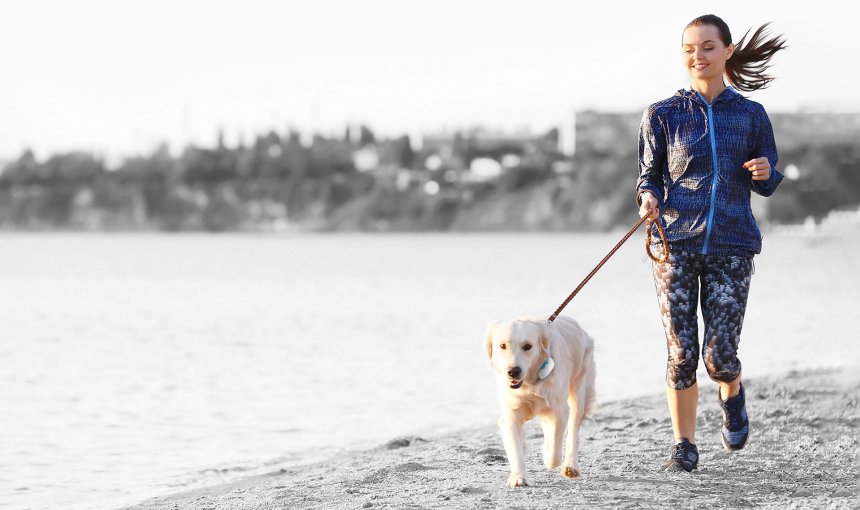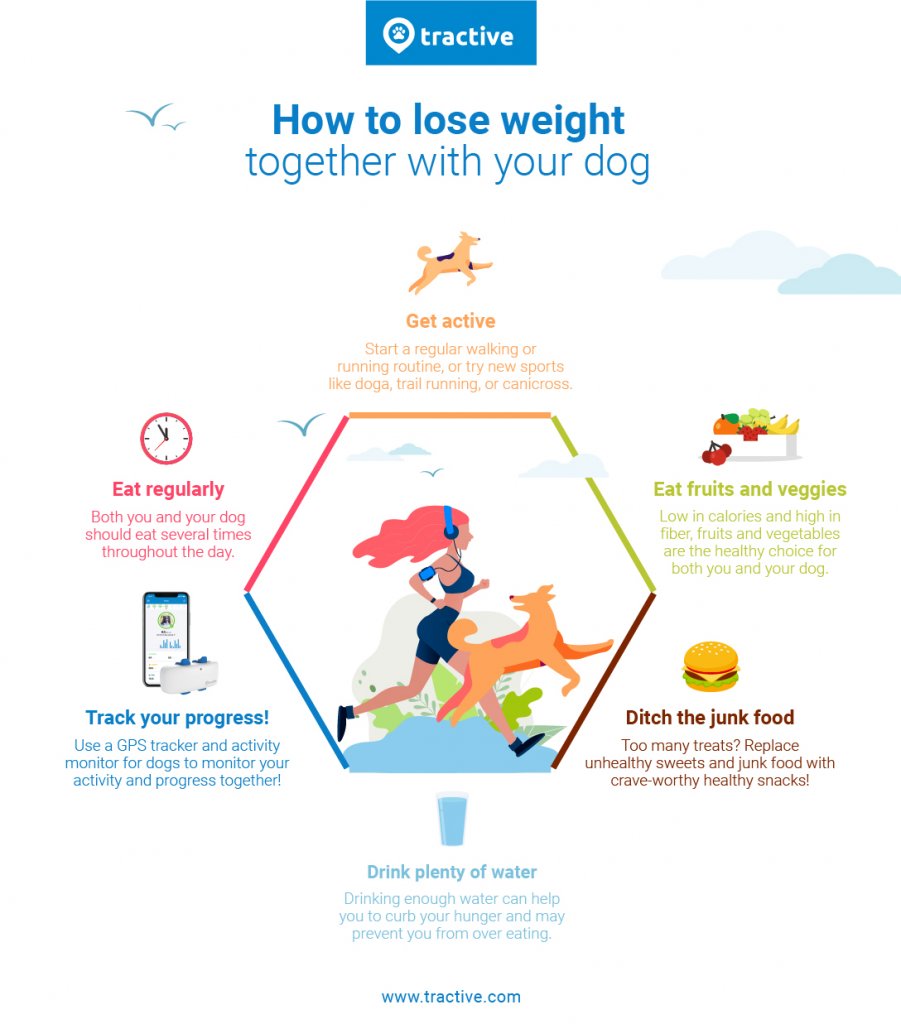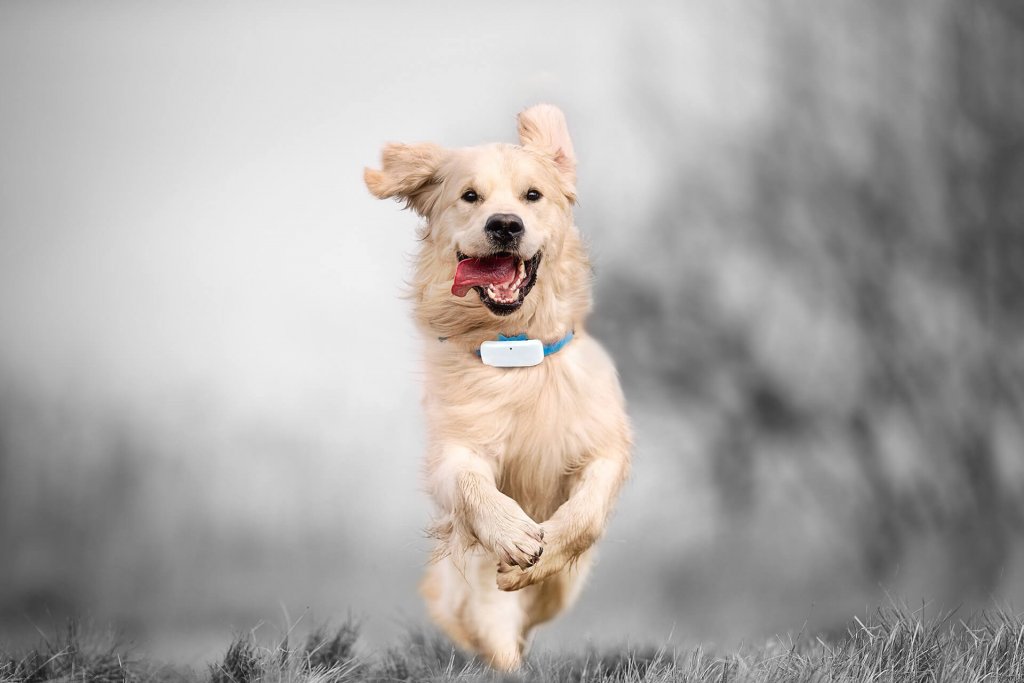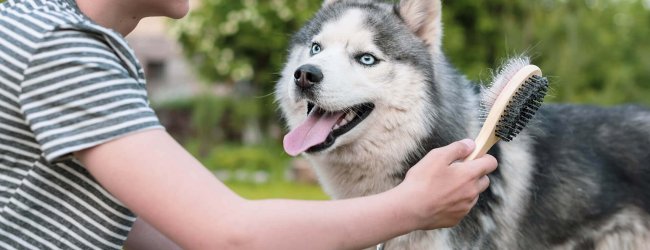How To Lose Weight With Your Dog
Are you ready to lose weight, get fit, healthy, and start 2021 off right? You don't have to do it alone! Find out how your dog might be your biggest weight loss advocate.

A new year, a new you! Who else is ready to leave 2020 behind and start a new, uh, more enjoyable era? If you’re motivated to lose weight this year, we’ve got some tips to help you get started. As you may know, dogs can help us make friends, develop healthy routines, and even feel more loved and happy. But if you’re wondering how to lose weight and keep it off, did you know that a dog may be able to help with that too? Inspired by success stories like the one we mention at the end of this article, we’re happy to bring you 5 tips for losing weight with the help of your dog.
Considering getting a dog?
Whether or not you already have a dog, you’re in the right place: this article contains tips that will help you find success on your weight loss journey. However if you don’t have a dog yet, you may want to check out these articles as well:
- How to adopt a dog: our tips for success
- First time dog parent? Here’s what you need to know
- Puppy or adult dog? Find out which dog is right for you!
So without further ado, here are our top 5 tips for how to lose weight with your furry friend’s support. Especially if you have an overweight dog, put these tips into practice for optimal results for both canine and human 🙂
Note: we are not medical experts; we’re dog lovers! If you’re unsure, check with your doctor before trying any of these suggestions.

1) Eat regularly throughout the day
For the best health and weight loss results, experts recommend to eat at regular intervals, which can help you to burn calories faster1. In fact, eating more than 3 times per day may support a healthy weight2. Plus, eating regularly will help you to curb your cravings for not-so-healthy options.
Just like your dog should eat at regular intervals, you should also try to eat several times throughout the day.
Not sure how much food your dog should eat at mealtime? Get our guide for how much (and how often) to feed your dog in a day.
2) Get active together
The biggest tip for how to lose weight with your dog? Get active! Dogs naturally help us get more physically active – as they require, at a minimum, daily walking (find out how often you should walk your dog here). If you’re not already doing so, start incorporating healthy dog walks into your daily schedule.
Whether walking, running, or doing any other physical activity together, remember to go at your own – and your dog’s – pace. Don’t be afraid to jog a mile, and then walk a mile. Running together with your dog must be something you both enjoy. Careful not to wear your dog out.
Some dogs, like those which are flat-faced, may experience difficulty breathing when doing exercise3. Proceed with caution – consult your veterinarian before engaging in heavier exercise activities with your dog.
You may want to try the following activities with your dog to burn calories, have fun, and work up a healthy sweat together (with the okay from your vet of course):
- Walking
- Running (these dog breeds are best suited to be your new running buddy)
- Hiking
- Swimming
- Doga
- Rollerblading
- Trail running
- Kayaking
- Paddle Boarding
- Playing fetch
- Agility training
- Canicross
- Racing
- Playing at a dog park

Tips for exercising with your dog
While you may want to try out a number of the above activities with your furry pal, keep in mind the following safety tips:
- Make sure your dog is trained in basic obedience commands.
- Consult your vet to determine your dog’s health and the appropriate activity levels they can safely achieve per day.
- Keep track of your progress with a Tractive GPS tracker with activity monitoring.
- Make sure your dog has access to plenty of fresh water and is fed at regular intervals.
- Avoid extreme cold or excess heat, and know the signs of heat stroke in dogs.
3) Eat plenty of fruits and vegetables
Fruits and vegetables are an important part of a healthy diet, and they’re the ideal food if you want to lose weight. Why? Not only are they full of vitamins and minerals, but they are also low in fat and calories, so you can eat a lot of them without feeling guilty. Moreover, their high fiber content promotes healthy digestion and can support weight loss.
Replace processed foods, like cookies, cake, and chips (we know, we know) with fruits and vegetables wherever possible.
In fact, your dog would also probably benefit from having more vegetables in their diet. Aim for whole foods, plant-based snacks, and home cooked meals where possible. You and your dog can enjoy the following human and dog-friendly foods together:
- Blueberries
- Apples
- Bananas
- Cantaloupe
- Mango
- Pears
- Peaches
- Oranges
- Broccoli
- Brussel sprouts
- Carrots
- Potatoes
- Celery
- Cucumber
- Sweet potato
Find out more about which vegetables are good for dogs and be sure to follow the cooking and preparation instructions – your dog won’t be able to stomach some veggies raw. You’ll also want to keep pits, stones, peels, stems and seeds away from your dog.
4) Ditch the junk food
If both you and your dog have been snacking on too many treats lately, this may be one reason why you’ve gained weight or had trouble shedding the pounds.
Pro tip: don’t buy your favorite junk food – you won’t have to fight temptation if the chocolate, sweets, and goodies are not even in your house!
Instead, find out which healthy snacks you love. For example, raspberries, seaweed snacks, or almond butter – find what healthy food you crave and allow yourself to enjoy it!
At the same time, assess how much ‘junk’ food your dog consumes. If your dog needs to lose weight too, consider cutting back on unhealthy dog treats or table scraps. Find a healthy alternative such as the vegetable and fruit suggestions above.
5) Drink plenty of water
Another essential weight loss tip that cannot be forgotten is to ensure you drink plenty of water. Set a reminder on your phone to drink water – and aim to drink about 6 – 8 glasses of water a day.
Drinking water throughout the day together with your furry pal will help to ensure that you both stay hydrated. It will also help you to feel more full – so you can avoid overeating or giving in to junk food cravings.
6) Bonus: track your progress
To keep your motivation high, consider investing in a fitness tracker so that you can monitor your weight loss progress. You can also track your daily sports and activity with your four legged friend in the Tractive GPS app. The Tractive GPS Dog Tracker attaches to your dog’s collar or harness, and will monitor their location, movement, and activity levels all day long.
Just been hiking? Check out your trip on the map using the Location History feature. Tired your dog out at the dog park? Find out how many calories they’ve burned with Activity Monitoring. In this way, the Tractive GPS supports a healthy lifestyles for you and your dog.
How to lose weight for dogs
Does your dog struggle with obesity or extra weight too? Then check out these tips: Everything you need to know to help your overweight dog lose weight.
Get the Tractive GPS Tracker & Activity Monitor for dogs
For more inspiration on how to lose weight with your dog, watch how one man was able to overcome obesity and lose over 140 pounds with the help of the shelter dog he adopted. His dog lost weight too!
If you liked this post, share it with a loved one or friend and support them on their weight loss journey!



